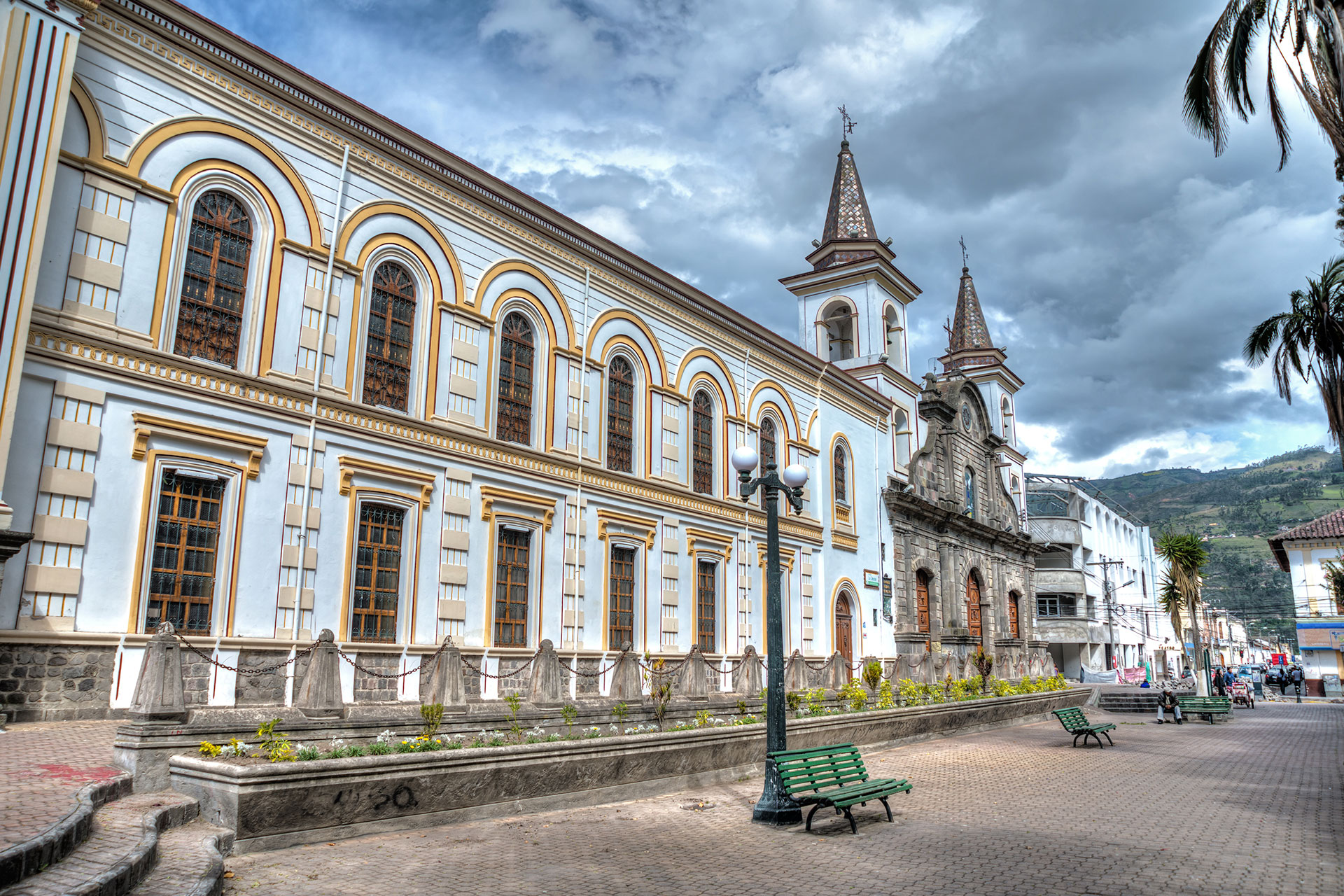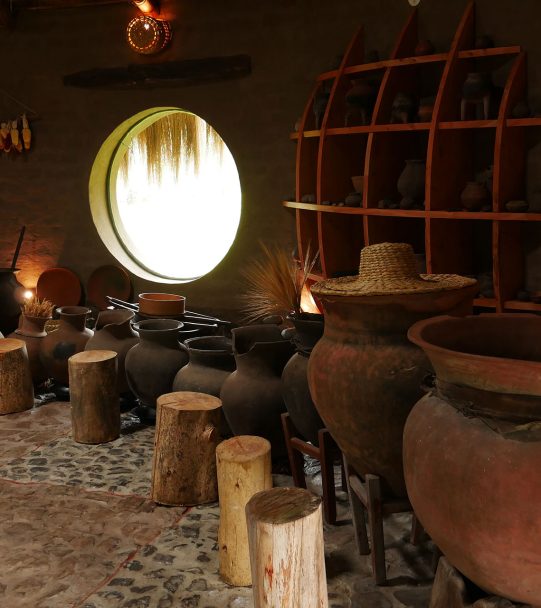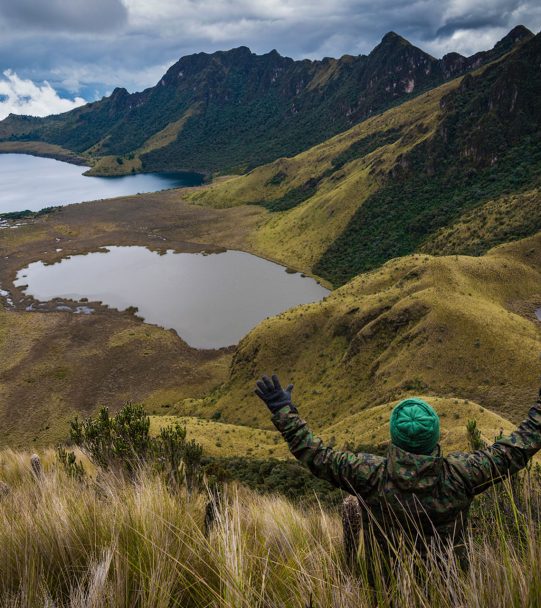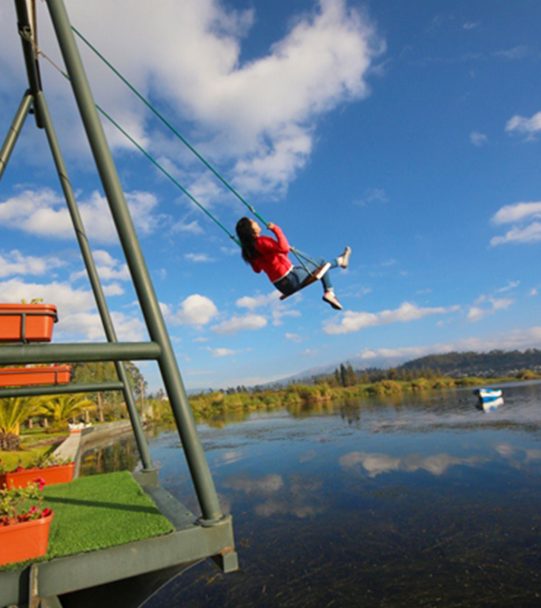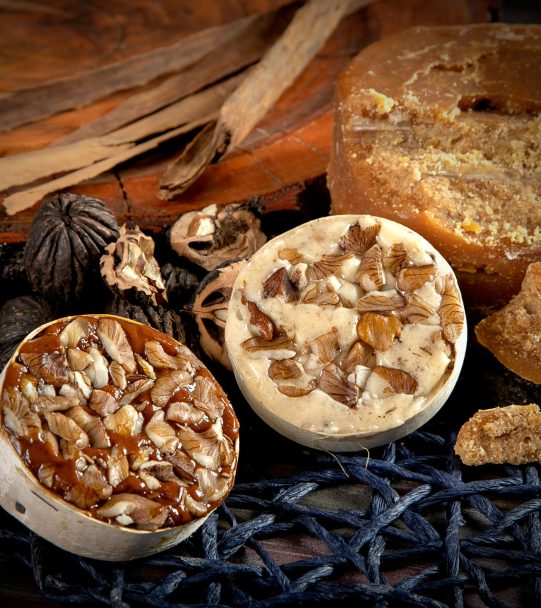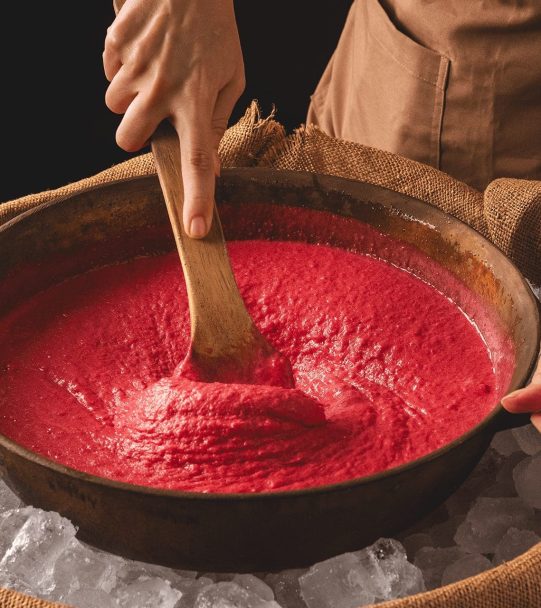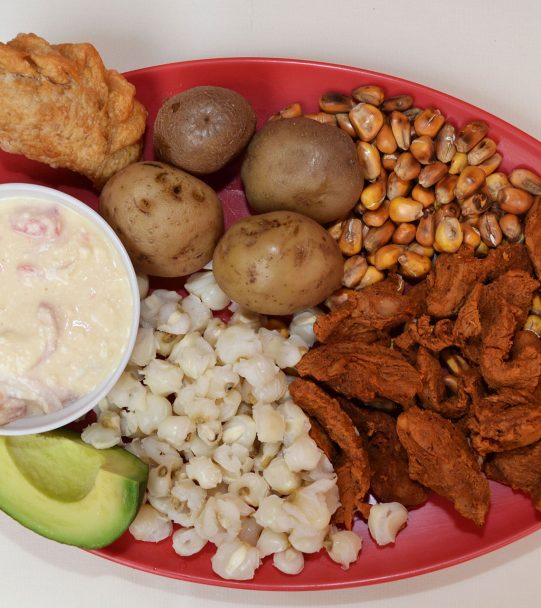Imbabura
The province of Imbabura, located in the northern highlands of the Ecuador, is distinguished by its geographic and cultural diversity. Its capital, Ibarra, combines modernity with ancestral traditions, surrounded by lakes, volcanoes and towns with a strong indigenous identity. Recognized for its rich handicrafts and gastronomy, Imbabura, known for its textile handicrafts, is an ideal destination for those seeking authenticity. Its strategic location makes it an obligatory stop on the Andean route, connecting cultures and unique landscapes of Ecuador.
Connectivity
You can reach Imbabura by road by private vehicle or bus through routes that connect Ibarra, its capital city, with main cities such as Quito y Guayaquil, The trip takes between 2 and 10 hours, respectively. For those who prefer to fly, Quito airport is the closest, and from there your trip continues by land for 2 hours to Imbabura.
Imbabura
Subscribe to receive news about Caminos Andinos
Temperature
Ranges from 8° to 24°.
Weather
Mountain temperate
More destinations
Activities and attractions
Imbabura awaits you with a unique blend of culture, nature and tradition. Tour Ibarra and its historic center, museums and cultural spaces such as El Cuartel. In Otavalo and Atuntaqui discover the textile legacy in living museums and craft markets, and do not miss the iconic Plaza de los Ponchos. Ascend the Imbabura and Cotacachi volcanoes, sail in lagoons such as Cuicocha and San Pablo, and relax in the hot springs of Chachimbiro. Experience Andean festivals such as Pawkar Raymi and Inti Raymi, full of rituals and color. Taste traditional dishes such as the Plato del Yamor, red meats or pigeon peas from Chota. Visit Zuleta and its embroidery workshops. Imbabura, World Geopark, offers you an authentic and unforgettable experience.
Atuntaqui, Imbabura
PHOTO: , Víctor Palaguachi, Ministry of Tourism of Ecuador
Trekking in the Cubilche Lagoon
PHOTO: Ministry of Tourism of Ecuador
Yahuarcocha International Race Track
PHOTO: Ministry of Tourism of Ecuador
Chachimbiro Spa
PHOTO: Ministry of Tourism of Ecuador
Ibarra, Yahuarcocha Lagoon
PHOTO: Ministry of Tourism of Ecuador
Yamor Festivities
PHOTO: Ministry of Tourism of Ecuador
The ancestral feast of Hatun Puncha, Cotacachi
PHOTO: Ministry of Tourism of Ecuador
Ibarra, syrup and nogadas
PHOTO: Ministry of Tourism of Ecuador
Chota Valley, Ovos
PHOTO: Ministry of Tourism of Ecuador
Otavaleño Handicrafts
PHOTO: Ministry of Tourism of Ecuador
Imbabura, San Antonio de Ibarra
PHOTO: Ministry of Tourism of Ecuador
Discover what we do
-
-
CULTURE
Ibarra: Museums and Culture
Discover Ibarra, a city where history and culture are alive in every corner. Its historic center captivates with the 19th century Cathedral, the Episcopal Chapel and the Government House, icons of its colonial legacy. Visit Downtown Cultural El Cuartel, a vibrant space for contemporary art. Visit the Museum of the Central Bank and see archaeological pieces of the Caranqui, along with religious art and local ethnography. Ibarra awaits you with identity, memory and an active cultural agenda.
Otavalo and Antonio Ante: Textile factories museums
Discover the textile legacy of Imbabura through two unmissable spaces. In Otavalo, visit the Otavalango Living Museum, where the traditions of the Kichwa people come to life. Here you can learn about the elaboration of ancestral weavings, enjoy music and traditional dances. In Antonio Ante, the Imbabura Factory Cultural Complex awaits you in an old restored textile factory, which today functions as an interactive museum with machinery exhibits, art workshops and stage presentations.
Antonio Ante and Cotacachi: Textile Tradition
The parish of Atuntaqui, in Antonio Ante is the textile capital of northern Ecuador, awaits you with more than 200 stores displaying all kinds of clothing of excellent quality, made with domestic and imported fabrics and high quality finishes. In Cotacachi, let yourself be surprised by the leather work: handmade jackets, bags and footwear, recognized for their style and durability. Two ideal destinations to live an authentic shopping experience in the textile heart of Imbabura.
Zuleta: Caranque House Museum
Discover the Carangue House Museum in Zuleta, a place that preserves and celebrates the legacy of the Caranqui culture. This restored adobe house opens its doors to show ancestral utensils, traditional clothing, mills, saddles and objects that reflect the daily life of this pre-Inca people. Guided by its own inhabitants, you can immerse yourself in historical stories and living customs. An unmissable visit to connect with the authentic roots of the Andean north.
Pimampiro: Petroglyphs
Discover the petroglyphs of Pimampiro, millenary engravings that tell ancestral stories of the Andean peoples. You can see figures carved in stone that represent ritual and cultural symbols of the past. An unmissable stop for those seeking to connect with the indigenous legacy in an environment full of history and mystery.
-
-
NATURE
Discover Imbabura declared UNESCO Global Geopark, The area has a great diversity of geological and natural heritage.
Water that creates and connects: Lakes, ponds and waterfalls
Mojanda combines three high altitude lagoons accessed by 4×4 routes, these lagoons are ideal for camping and exploration.
San Pablo Lake, at the foot of the Imbabura volcano, stands out for its biodiversity of activities such as kayaking, boating, sport fishing, cycling, hiking, horseback riding, among others. Peguche waterfall is a sacred place surrounded by Andean nature, ideal for walking, breathing fresh air and connecting with nature.
Cuicocha Lagoon is the volcanic crater of Cotacachi, an inactive stratovolcano and its lagoon houses two volcanic islets that you can visit on boat rides. This lagoon has a circuit of 4 to 7 hour trails that surround it where you can enjoy spectacular views.
Yahuarcocha Lagoon, allows boat rides, recreational fishing, hiking in the surroundings, picnics at the viewpoints and, if you are an adventure lover, you can visit the international racetrack.
Otavalo: Condor Park
In Otavalo, the Condor Park invites you to get up close to the most impressive birds of prey in the Andes. This rescue center offers educational exhibits with hawks, eagles and condors in full flight, in a natural environment overlooking the Imbabura. Ideal for families and nature lovers, the park combines conservation, Andean culture and adventure in one place. A unique experience not to be missed.
Urcuqui: Thermal baths
Discover the hot springs of Chachimbiro, in Urcuquí, an ideal destination to relax in mineral waters that are born from volcanic subway sources, with temperatures that reach around 50 °C. These waters, rich in minerals, arise from the geothermal activity of the sector and are recognized for their therapeutic properties. Surrounded by vegetation and Andean landscapes, they offer a perfect environment to rest, enjoy with the family and recharge your batteries in the north of Ecuador.
Volcanoes: Imbabura and Cotacachi
Discover the imposing Imbabura volcano, ideal for hikers in good physical condition. Its ascent takes between 6 and 8 hours round trip, with moderate to high difficulty, and offers spectacular views of lagoons and valleys. The more challenging Cotacachi volcano requires mountain experience, as its summit is over 4,900 meters and the ascent takes about 10 hours. Both offer unique landscapes and an unforgettable experience in the Andes.
-
-
ANCESTRAL COMMUNITIES AND RURALITY
Indigenous peoples:
Imbabura is a destination where cultural diversity comes alive. Here people such as the Karankis, Otavalos, Kayambis, Natabuelas and Afro-Ecuadorians coexist, each with unique traditions and vibrant cultural expressions. Several communities open their doors to tourism, offering authentic experiences that include ancestral rituals, local gastronomy, tours of ceremonial sites and breathtaking landscapes. Ideal for travelers seeking real connection, living knowledge and unforgettable moments in the heart of the Andean world.
Holidays:
In Imbabura there are four Raymikuna, Andean ritual festivals that coincide with the solstices and equinoxes of the year. These celebrations are linked to the agricultural calendar and have corn as their main symbol. They are: Koya Raymi in September, which honors femininity and sowing, with rituals dedicated to Pachamama. Capac Raymi in December, which celebrates the spiritual maturity and learning of the youth. Pawkar Raymi in March, which celebrates the flowering of mother earth with cultural and sporting events. Inti Raymi in June, the most representative festival in honor of the Sun.
Experience the Yamor Festival in Otavalo, one of the most authentic celebrations of Andean Ecuador. Born in 1952, this festival honors corn, sacred food for the Kichwa Otavalo people. Chicha is made with seven varieties of corn, in gratitude to the Pachamama. Enjoy dances, parades, music, craft fairs and the emotional reunion of the Otavaleños with their homeland.
-
-
GASTRONOMY
Traditional cuisine:
The gastronomy of Imbabura is an experience that awakens the senses, as authentic and diverse as its traditions. In Otavalo, the «Plato del Yamor» combines ancestral flavors with festive identity: potato tortillas, mote, pork, roasted corn and empanadas de viento. Ibarra delights with its famous paila ice cream, corn bread, nogadas and blackberry syrup. Cotacachi surprises with its red meats, accompanied by potatoes, mote and roasted corn. The Chota Valley offers Afro-descendant flavors such as pigeon peas with yucca and fried ripe plantains. Intag, surrounded by green mountains, stands out for its high altitude coffee, grown organically and recognized for its aroma and smoothness. Not to be missed delicacies in Imbabura.
-
-
CRAFTS
Imbabura is recognized as one of the most prolific provinces in the production of handicrafts in Ecuador. Each corner of Imbabura contributes its unique stamp: the weavings of Otavalo and Peguche, the wood carvings in San Antonio, the leather work in Cotacachi, the hand embroidery of Santa Maria de la Esperanza, Zuleta, and the creations of Natabuela, the cabuya handicrafts and natural products in Intag, Angochagua, among others. These works reflect the talent and dedication of a hard-working people, who turn their traditions into art.
Otavalo: Plaza de Ponchos
Discover the Plaza de los Ponchos in Otavalo, a handicraft epicenter that gathers more than 3,000 artisans of the Kichwa culture. Here you can buy ponchos, blankets, scarves, hats and jewelry with traditional designs, all handmade. On Saturdays the market comes alive with music, rituals and local gastronomy, while you bargain with a smile on your face. It is also ideal for taking vibrant photos and immersing yourself in Andean interculturalism. A must-see destination to take authentic art and cultural souvenirs back with you.
Zuleta: Embroidery workshops
Discover Zuleta, in the Angochagua parish, a destination that connects you with the living tradition of the Andes. Visit hand embroidery workshops, where local craftswomen create unique pieces full of color and detail. In February or March during the carnival, enjoy its handicraft and gastronomic fair, combining local crafts with the delicious fusion of Andean flavors. In addition, visit the last saddlery workshop in town and learn about the ancient art of leather work. An authentic and unmissable experience.
Andean textiles: Andean sashes or chumbiz
The chumbi, or Andean sash, is a traditional garment that represents identity and memory in Imbabura. Hand-woven with vibrant colors and symbolic designs, it is used to adjust the clothing of indigenous communities and can be purchased at the Plaza de los Ponchos in Otavalo, as an authentic souvenir of Andean textile art.
CULTURE
Ibarra: Museums and Culture
Discover Ibarra, a city where history and culture are alive in every corner. Its historic center captivates with the 19th century Cathedral, the Episcopal Chapel and the Government House, icons of its colonial legacy. Visit Downtown Cultural El Cuartel, a vibrant space for contemporary art. Visit the Museum of the Central Bank and see archaeological pieces of the Caranqui, along with religious art and local ethnography. Ibarra awaits you with identity, memory and an active cultural agenda.
Otavalo and Antonio Ante: Textile factories museums
Discover the textile legacy of Imbabura through two unmissable spaces. In Otavalo, visit the Otavalango Living Museum, where the traditions of the Kichwa people come to life. Here you can learn about the elaboration of ancestral weavings, enjoy music and traditional dances. In Antonio Ante, the Imbabura Factory Cultural Complex awaits you in an old restored textile factory, which today functions as an interactive museum with machinery exhibits, art workshops and stage presentations.
Antonio Ante and Cotacachi: Textile Tradition
The parish of Atuntaqui, in Antonio Ante is the textile capital of northern Ecuador, awaits you with more than 200 stores displaying all kinds of clothing of excellent quality, made with domestic and imported fabrics and high quality finishes. In Cotacachi, let yourself be surprised by the leather work: handmade jackets, bags and footwear, recognized for their style and durability. Two ideal destinations to live an authentic shopping experience in the textile heart of Imbabura.
Zuleta: Caranque House Museum
Discover the Carangue House Museum in Zuleta, a place that preserves and celebrates the legacy of the Caranqui culture. This restored adobe house opens its doors to show ancestral utensils, traditional clothing, mills, saddles and objects that reflect the daily life of this pre-Inca people. Guided by its own inhabitants, you can immerse yourself in historical stories and living customs. An unmissable visit to connect with the authentic roots of the Andean north.
Pimampiro: Petroglyphs
Discover the petroglyphs of Pimampiro, millenary engravings that tell ancestral stories of the Andean peoples. You can see figures carved in stone that represent ritual and cultural symbols of the past. An unmissable stop for those seeking to connect with the indigenous legacy in an environment full of history and mystery.
NATURE
Discover Imbabura declared UNESCO Global Geopark, The area has a great diversity of geological and natural heritage.
Water that creates and connects: Lakes, ponds and waterfalls
Mojanda combines three high altitude lagoons accessed by 4×4 routes, these lagoons are ideal for camping and exploration.
San Pablo Lake, at the foot of the Imbabura volcano, stands out for its biodiversity of activities such as kayaking, boating, sport fishing, cycling, hiking, horseback riding, among others. Peguche waterfall is a sacred place surrounded by Andean nature, ideal for walking, breathing fresh air and connecting with nature.
Cuicocha Lagoon is the volcanic crater of Cotacachi, an inactive stratovolcano and its lagoon houses two volcanic islets that you can visit on boat rides. This lagoon has a circuit of 4 to 7 hour trails that surround it where you can enjoy spectacular views.
Yahuarcocha Lagoon, allows boat rides, recreational fishing, hiking in the surroundings, picnics at the viewpoints and, if you are an adventure lover, you can visit the international racetrack.
Otavalo: Condor Park
In Otavalo, the Condor Park invites you to get up close to the most impressive birds of prey in the Andes. This rescue center offers educational exhibits with hawks, eagles and condors in full flight, in a natural environment overlooking the Imbabura. Ideal for families and nature lovers, the park combines conservation, Andean culture and adventure in one place. A unique experience not to be missed.
Urcuqui: Thermal baths
Discover the hot springs of Chachimbiro, in Urcuquí, an ideal destination to relax in mineral waters that are born from volcanic subway sources, with temperatures that reach around 50 °C. These waters, rich in minerals, arise from the geothermal activity of the sector and are recognized for their therapeutic properties. Surrounded by vegetation and Andean landscapes, they offer a perfect environment to rest, enjoy with the family and recharge your batteries in the north of Ecuador.
Volcanoes: Imbabura and Cotacachi
Discover the imposing Imbabura volcano, ideal for hikers in good physical condition. Its ascent takes between 6 and 8 hours round trip, with moderate to high difficulty, and offers spectacular views of lagoons and valleys. The more challenging Cotacachi volcano requires mountain experience, as its summit is over 4,900 meters and the ascent takes about 10 hours. Both offer unique landscapes and an unforgettable experience in the Andes.
ANCESTRAL COMMUNITIES AND RURALITY
Indigenous peoples:
Imbabura is a destination where cultural diversity comes alive. Here people such as the Karankis, Otavalos, Kayambis, Natabuelas and Afro-Ecuadorians coexist, each with unique traditions and vibrant cultural expressions. Several communities open their doors to tourism, offering authentic experiences that include ancestral rituals, local gastronomy, tours of ceremonial sites and breathtaking landscapes. Ideal for travelers seeking real connection, living knowledge and unforgettable moments in the heart of the Andean world.
Holidays:
In Imbabura there are four Raymikuna, Andean ritual festivals that coincide with the solstices and equinoxes of the year. These celebrations are linked to the agricultural calendar and have corn as their main symbol. They are: Koya Raymi in September, which honors femininity and sowing, with rituals dedicated to Pachamama. Capac Raymi in December, which celebrates the spiritual maturity and learning of the youth. Pawkar Raymi in March, which celebrates the flowering of mother earth with cultural and sporting events. Inti Raymi in June, the most representative festival in honor of the Sun.
Experience the Yamor Festival in Otavalo, one of the most authentic celebrations of Andean Ecuador. Born in 1952, this festival honors corn, sacred food for the Kichwa Otavalo people. Chicha is made with seven varieties of corn, in gratitude to the Pachamama. Enjoy dances, parades, music, craft fairs and the emotional reunion of the Otavaleños with their homeland.
GASTRONOMY
Traditional cuisine:
The gastronomy of Imbabura is an experience that awakens the senses, as authentic and diverse as its traditions. In Otavalo, the «Plato del Yamor» combines ancestral flavors with festive identity: potato tortillas, mote, pork, roasted corn and empanadas de viento. Ibarra delights with its famous paila ice cream, corn bread, nogadas and blackberry syrup. Cotacachi surprises with its red meats, accompanied by potatoes, mote and roasted corn. The Chota Valley offers Afro-descendant flavors such as pigeon peas with yucca and fried ripe plantains. Intag, surrounded by green mountains, stands out for its high altitude coffee, grown organically and recognized for its aroma and smoothness. Not to be missed delicacies in Imbabura.
CRAFTS
Imbabura is recognized as one of the most prolific provinces in the production of handicrafts in Ecuador. Each corner of Imbabura contributes its unique stamp: the weavings of Otavalo and Peguche, the wood carvings in San Antonio, the leather work in Cotacachi, the hand embroidery of Santa Maria de la Esperanza, Zuleta, and the creations of Natabuela, the cabuya handicrafts and natural products in Intag, Angochagua, among others. These works reflect the talent and dedication of a hard-working people, who turn their traditions into art.
Otavalo: Plaza de Ponchos
Discover the Plaza de los Ponchos in Otavalo, a handicraft epicenter that gathers more than 3,000 artisans of the Kichwa culture. Here you can buy ponchos, blankets, scarves, hats and jewelry with traditional designs, all handmade. On Saturdays the market comes alive with music, rituals and local gastronomy, while you bargain with a smile on your face. It is also ideal for taking vibrant photos and immersing yourself in Andean interculturalism. A must-see destination to take authentic art and cultural souvenirs back with you.
Zuleta: Embroidery workshops
Discover Zuleta, in the Angochagua parish, a destination that connects you with the living tradition of the Andes. Visit hand embroidery workshops, where local craftswomen create unique pieces full of color and detail. In February or March during the carnival, enjoy its handicraft and gastronomic fair, combining local crafts with the delicious fusion of Andean flavors. In addition, visit the last saddlery workshop in town and learn about the ancient art of leather work. An authentic and unmissable experience.
Andean textiles: Andean sashes or chumbiz
The chumbi, or Andean sash, is a traditional garment that represents identity and memory in Imbabura. Hand-woven with vibrant colors and symbolic designs, it is used to adjust the clothing of indigenous communities and can be purchased at the Plaza de los Ponchos in Otavalo, as an authentic souvenir of Andean textile art.
 Skip to content
Skip to content


